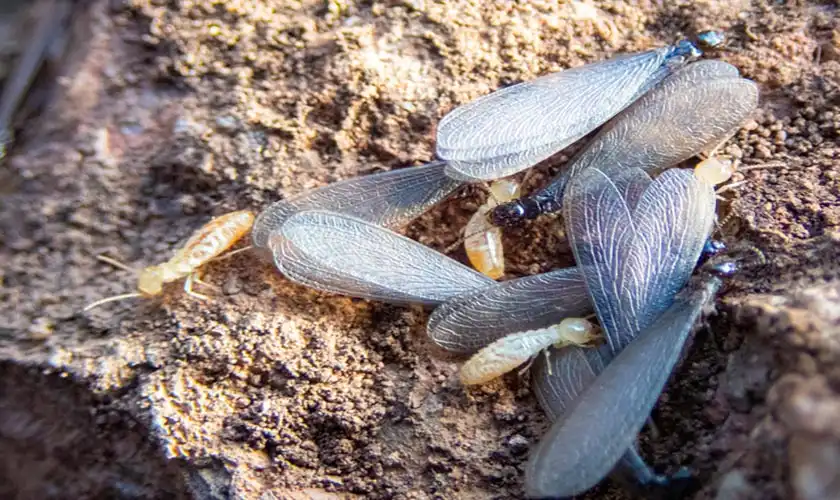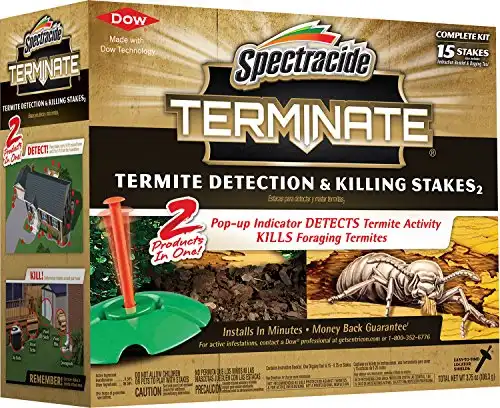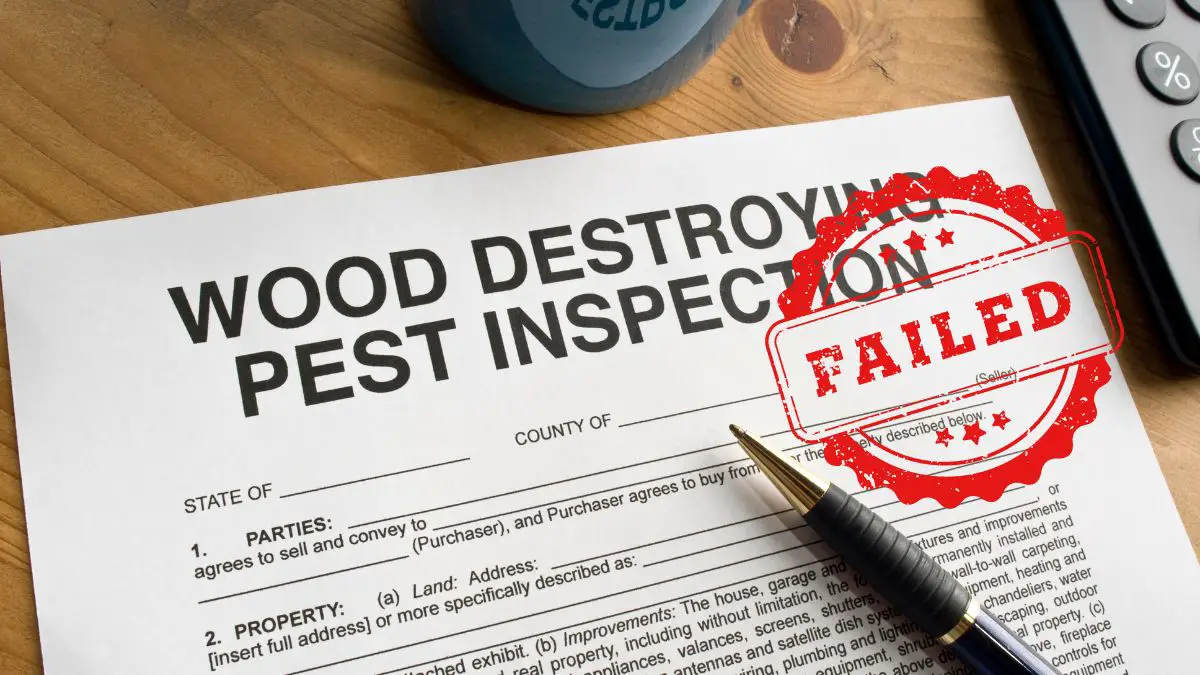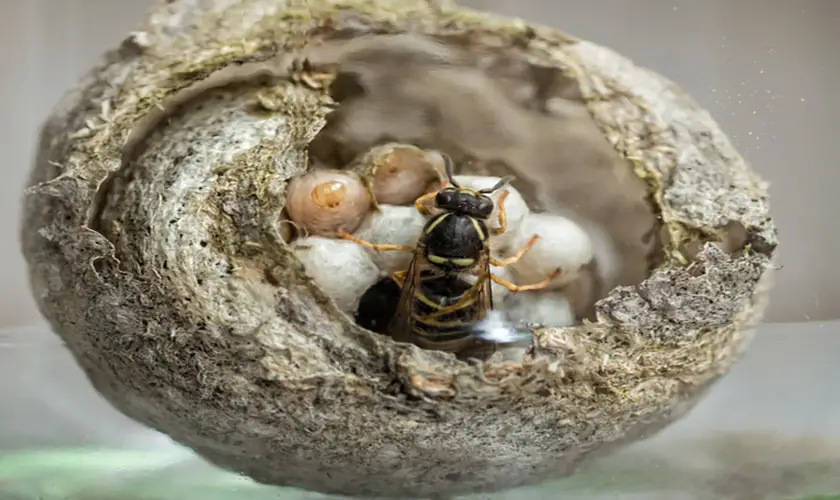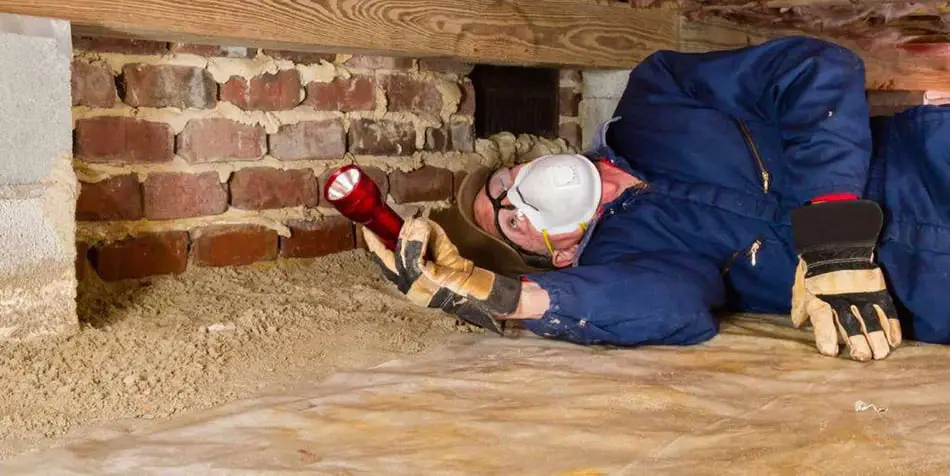
Termites do not have a perfect relationship with humans because of their wood-eating habits and the destruction they can cause to homes and wooden structures. However, flying termites indicate that a new colony is on the move and looking for a new place to call home!
This is how to get rid of flying termites and prevent them from returning to your home:
- Find and identify the termite colony
- Call a professional exterminator
- Apply a termite baiting treatment
- Spray liquid termiticide
- Create a termite barrier
- Constant termite monitoring and prevention
Get FREE quotes from licensed pest control technicians in your area today. Whether you need a termite inspection or a full treatment, We Can Help! All technicians are screened, licensed, and insured.
A colony of termites can cause severe structural damage to your home because of their ability to chew through flooring and wood undetected. Swarms of flying termites aren’t necessarily dangerous, but you don’t want a new colony of new termites to be raised anywhere near your home. A new province requires a good food source, which could be your home, so you could prevent unwanted and costly repairs by getting rid of a swarm of flying termites.
How To Get Rid Of Flying Termites
The best way to eliminate flying termites is to treat the infestation by wiping out the existing colony or preventing a swarm from establishing a new colony. In other words, the best plan of attack is defense!
By eradicating flying termites from your property, you will hopefully prevent the spread of further future colonies in your area. In addition, using the methods below will not attract swarms from other colonies to your home, as you will not have any swarming flying termites leaving the old colony for them to mate with.
These are the best steps to use when eradicating flying termites and preventing them from returning to your home:
1. Find And Identify The Termite Colony
When you first notice a swarm of flying insects, identify them correctly as flying termites and not flying ants. We have provided a handy chart further down in this article to assist with identifying them. In addition, identifying the correcting flying insect will determine how the exterminators should treat them.
If you are in time to see where they are exiting your home, make a note as that is where the existing colony is thriving. The exterminator can eradicate the existing colony to prevent them from causing any further damage to your home and stop them from raising a new swarm of flying termites to establish a new colony.
2. Call A Professional Exterminator
Professional pest exterminators can be expensive, but they are worth the money if you want flying termites and other pests removed. Pest control professionals can effectively deal with termite removal and often provide a warranty. They will perform a termite inspection and then treat existing termite colonies.
There is a DIY route that you can take to get rid of them, but, in our opinion, this is the time that you need the professionals!
There are chemical-free alternatives for eradicating termites, which a professional exterminator should also apply.
- Cold treatments are effective for controlling dry wood termites. Liquid nitrogen is injected into holes in the wood, killing the termites.
- Products containing soil-borne fungi can be used to kill the termites over a couple of weeks.
- Beneficial nematodes (a type of worm that preys on termites) can be released into the soil. These worms can live in the ground for up to two years and could eradicate your termite problem!
3. Apply A Termite Baiting Treatment
Pest exterminators use a termite baiting and monitoring system to effectively remove termites from your home. An effective bait to attract termites consists of cardboard, paper, and holistic bait, inhibiting termite growth.
The bait stations are staked in the ground around the perimeter of your home to attract foraging termites. They then take the bait back to the colony and share it with other termites in the colony. After about three to fourteen days, the colony can no longer support itself, and all the remaining termites will die.
4. Spray A Liquid Termiticide
Two types of sprays are generally used to fight termites:
- A repellent spray is used to repel the termites. Unfortunately, termites will enter your home through that spot if one spot is missed during the application process.
- A non-repellent spray that is almost invisible to termites but will eliminate termites on contact. A very effective insect killer is an insecticide foam that is available to spray into cracks and crevices. Spray twice a week over the infested area until the termites are eliminated.
Most termiticides are highly toxic and should only be handled by trained exterminators.
5. Create a Termite Barrier
Installing a termite protection barrier around your house should prevent the flying termites from burrowing underground and establishing a new colony. Some termite barriers do not contain pesticides and are used as mechanical and physical impairments to prevent termite foraging activity.
Some termite barrier treatments are powder granules which you can spread around your house to kill off the termites.
6. Constant Termite Monitoring And Prevention
Being proactive and keeping the area around your home neat can prevent flying termites from being attracted to your home. Follow the steps below to prevent them from returning.
How To Prevent Flying Termites From Returning
While there is not too much that you can do to stop flying termites from swarming onto your property, there are ways that you can prevent termites from returning to your home and establishing new colonies once they have been treated and eradicated.
Prevention always works hand in hand with elimination to ensure that you follow all the steps to ensure that they don’t return and that you have a termite-free home!
Try these remedies to keep flying termites away from your home during the swarming season:
- Cover up your garden shed and firewood.
- Remove old tree stumps.
- Clean up your garden and remove all old debris such as fallen twigs, sticks, and leaves.
- Keep untreated wood and mulch away from your home.
- Spray orange oil over all surfaces to repel flying termites.
- Repair any leaky water pipes and faucets inside and outside your home.
- Fit insect screens to all your windows and doors and check them regularly for rips and tears.
- Get rid of potential entry points to your home. Seal all gaps and cracks in the foundation of your home.
- If you locate a termite nest, break it open and let the ants take care of the termites for you! Ants prey on termites, so they are easy targets once their nest is destroyed.
DIY Methods To Eradicate Flying Termites
If you don’t have any termite colonies in your home, but they have taken up residence in your shed, on your deck, or under your fence, you can try to eradicate them yourself. Many chemical and holistic products are available online or from your nearest garden center to assist in getting rid of them.
Always wear the necessary personal protection gear and read the instructions on the packaging before using any of the products.
Before you start any process, read through our handy guide on identifying flying termites correctly and how to prevent them from returning and building a new colony.
Home Remedies To Eliminate Flying Termites Colonies
If you don’t want toxic chemicals and pesticides around your home, try using one of these natural home-made remedies to get rid of the infestation:
- Orange oil. Mix a few drops of orange oil with water and spray over the infected areas.
- Cold and hot treatments. Termites cannot survive in extreme temperatures. Any temperature above 120 degrees Fahrenheit (50 degrees Celsius) or below -20 degrees Fahrenheit (-28 degrees Celsius) is fatal. Place an infected piece of furniture in direct sunlight or clean the area with ice-cold water.
- Boric acid works wonders at eliminating termites! Sprinkle boric acid over the infected areas to destroy them effectively.
- Aloe vera gel. Aloe vera gel will instantly kill any termites it comes into contact with when mixed with water.
- Clove oil mixed with water is a safe, natural remedy for termites.
- Salt. Spread any salt around a termite nest. This will kill the termites in the nest and prevent more termites from entering the area.
- White vinegar will kill termites in the nest. Spray the vinegar directly onto the nest.
Here is an excellent video showing a formula to use:
What Are Flying Termites?
Termites are related to cockroaches and are often called “white ants” even though they are not ants. Flying termites are swarms of mature termites leaving their existing colony and searching for new mates to start a new termite colony.
Technically, termites are not classified as flying insects as only a small number of them can fly, and then only for a short time during the breeding season before losing their wings. Therefore, flying termites are a sign of more significant problems, but it can be challenging to spot flying termites when they leave the nest as this is a very brief event.
Do All Termites Fly?
Not all termites have wings, so not all termites can fly. In addition, termites belong to different castes within the termite colony; each has a particular role in the settlement and is responsible for another task:
- King and Queen. These are the reproductive caste of the colony. The queen’s job is to reproduce and build the colony. The king and queen mate for life.
- Workers. Workers are responsible for the labor in the colony. They provide food and are responsible for food storage, brood, and nest maintenance. They are the biggest group of termites found in infested wood.
- Soldiers. They have one purpose only, to defend the colony. They have massive, powerful jaws and cannot feed themselves. Instead, they are provided for by the workers. They spray a noxious sticky secretion at their enemies when protecting the colony.
- Reproducers or Alates (flying termites). These termites leave the nest to start a new colony. A new king and queen are raised from the old colony to find a suitable mate. They spend the rest of their lives in the nest of the new colony, being fed and cared for by the workers. An alate is the only termite that has wings.
Why Do Termites Swarm?
Flying termites are responsible for establishing and growing new colonies, so when they swarm, the mature termites leave their old home and look for a new home to start a new colony. They fly away from the old colony, searching for new mates during the breeding season.
Female flying termites release a pheromone as they fly, attracting potential male mates from their own and other colonies. Thus, a termite swarm is male termites attracted to the female pheromones during the breeding season. This annual event is often called a “nuptial flight.”
A flying termite swarm will only last about 30 to 40 minutes in the air, and they will only fly short distances from their old nest to start a new colony. The mature termites fly in large numbers towards any bright light, but they only have a few hours to bury themselves in soil or disappear into a wooden structure, or they will die from dehydration.
Once the mating ritual is completed, and the termites are back on solid ground, the female discards her wings to look for a suitable place to build her nest, either underground in the soil or the timber of your home.
After a termite pair has successfully mated, they establish and start a new colony. This new couple becomes the new King and Queen of their colony and starts producing new termites to increase their colony.
Colonies three years old, or more, will produce flying termites, so if you see any flying away from your property, the chances are that you have a pretty strong termite colony thriving in or around your home somewhere!
An Upside to a Swarming Colony:
- You are now aware that you have an existing problem and can take care of it before they cause any more damage.
- You can eradicate the new swarm once it has landed and prevent a new colony from being built to produce more termites to damage your home.
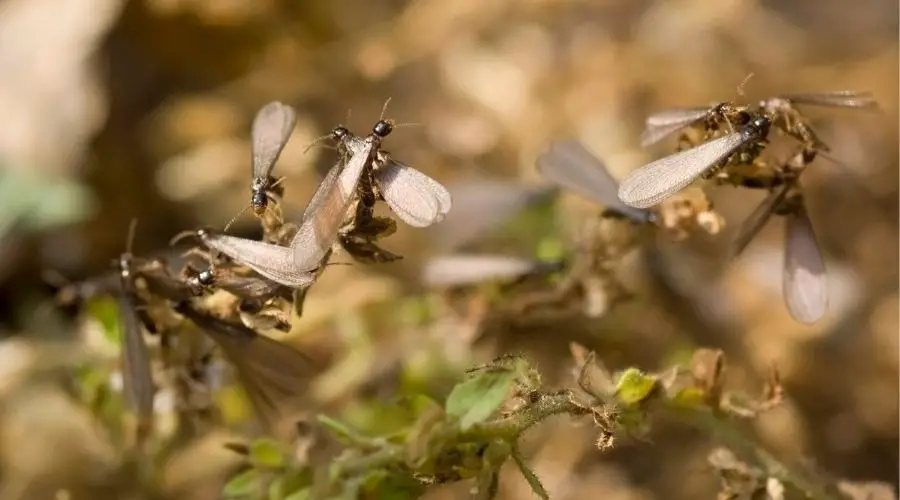
How To Identify Flying Termites In Your Home
If you see swarms of termites flying around your home, you could already have an existing termite problem, and your home could be at risk due to a potential termite infestation.
Look for these signs of a termite infestation in your home.
- Termite droppings, or frass, around your home
- Discarded wings around wood, doorframes, and sills. The more wings you can see, the bigger the infestation
- Mud tubes along with the foundations or exterior of your home
- Termite damage like rotting or hollowed-out wood
- Signs of tunneling
- Softwood that sounds hollow when tapped.
- Holes and wood shavings on trees
- Bubbling or uneven paint
Why Do I Have Flying Termites?
Termites will move into your home if the conditions are right for them. For example, a warm place with a portion of good food and water supply will attract them. On the other hand, if you live in an area with heavy rainfall and humid weather, your dry, comfortable home is an excellent place for flying termites to establish a new colony.
Hospitable habitats for flying termites looking for new places to establish colonies could include any parts of your home or other wooden structures which sustained any damage during the winter months because of rain or snow.
Flying termites will likely leave their colony to establish a new colony from April to August. They will often swarm after a rainstorm when the air is still and calm.
What Do Flying Termites Look Like?
The size and color of these insects vary depending on the species, but generally, workers and soldiers are tan, light brown, or orange, and flying termites are dark brown, or black, in color and are around 3/8 of an inch (10mm) long with their wings folded.
Their wings are a translucent burnt orange color with a dark membrane and are about twice the length of the flying termites when they are unfolded and in flight.
Which Termites Are In My Home?
There are about 3000 known termite species worldwide, with only 50 species being found in North America, 400 in South America, and 10 in Europe.
The most common termites found in our homes are:
1. Subterranean Termites
This species lives in colonies that contain 2 million members and is the most destructive termite species. They live underground or in damp areas above ground and build mud tubes to protect themselves from open air and gain access to food sources.
2. Drywood Termites
This termite species do not need any contact with soil and build its nest in wooden walls, roof supports, and any dead and rotting wood around the home. They don’t require much moisture but are often found near a water source such as a leaky pipe.
3. Dampwood Termites
Dampwood termites infest wood with high moisture content and are larger than other termites. They do not generally infest structures with low moisture content, but they will invade a damp structure, so take care to keep all moisture away from your wooden structures.
4. Conehead Termites
Originally known as “tree termites,” their name was changed as this termite is not only found in trees. Unlike other termites, the conehead termites forage on the ground and don’t rely on underground tunnels to travel. Unfortunately, these termite species are very aggressive and can cause significant property damage in a short space of time.
What Attracts Flying Termites?
Streetlights and any other light source will attract flying termites in their thousands. If your windows are open, they will fly indoors directly towards your house lights. While it is quite distressing to have a swarm of flying termites in your sitting room, don’t try to spray them with an insecticide to get rid of them, as you will not get rid of too many of them, and you will pour toxins into the air that you breathe!
The best way to eliminate flying termites inside your home is to switch off all your lights, inside and outside, and to open all your doors and windows. Then, they should leave as quickly as they arrived without causing any damage to your home.
Do Flying Termites Bite People?
Flying termites will not sting, bite, or directly harm humans. Their only aim is to find food and water to maintain their growing colony.
The only damage that they cause is to your wooden structures. Termites don’t bite people or pets.
Are Termites A Beneficial Insect?
Termites are detritivores. What this means is that they feed on dead and decomposing plant matter. Therefore, they are vital to the ecosystem as they recycle dead wood, plants, and feces.
They are split up into a further two groups:
- Lower termites. This group feeds on wood. They will choose fungi-infested wood, which is easier to digest because the fungi are high in protein.
- Higher termites. This group feeds on various materials, including grass, leaves, roots, and feces.
What You Should Know About Flying Termites
Flying termites are quite crafty insects, capable of starting new colonies of millions of termites!
- If you find the exit from their colony, don’t block it up, as they will create more holes as a means to escape, causing more damage to your home!
- If you see a swarm on or around your property, you have a colony living somewhere, so don’t ignore the problem! The colony needs to be destroyed before they destroy your home!
- Don’t try to eliminate flying termites with a can of insecticide. You will only kill a few at most. Instead, follow them to find their colony and destroy that!
- Flying termites don’t live very long and will die within 24 hours of taking off. So only the new King and Queen establish a new colony.
Flying Termites Vs. Flying Ants – Is There A Difference?
Flying ants and flying termites are often mistakenly identified as the same insect. This is not the case. The insects may look similar, but they do have different characteristics. Flying ants are relatively harmless, so if you identify them as ants, you don’t need to worry about them causing as much damage as termites.
Have a look at our identification chart to tell them apart:
| Flying Termites | Flying Ants | |
|---|---|---|
| Wings | Two pairs of equal length | Two pairs, front pair longer than the second pair |
| Antennae | Broken into small segments and look straight | Longer segments with an elbow at mid-point |
| Color | Beige or tan | Dark red or black |
| Waist | Thick waists about the width of the body | Thin waists on segmented bodies |
| Mud tubes | Created by colonies to climb up the sides of the wood, or digested wood pellets | |
| Dirt piles | Mounds visible around the site of the infestation |
Conclusion
Termite colonies could cause significant damage to your home for many years without you even knowing they are there! So be aware of and watch out for the tell-tale signs of flying termites and take the appropriate action to eradicate them before they establish a colony in your house.
The presence of termites on your property can devalue it just by them being there, so if you are planning on selling, check first to see if you have any signs of these pests and get rid of them!
Get FREE quotes from licensed pest control technicians in your area today. Whether you need a termite inspection or a full treatment, We Can Help! All technicians are screened, licensed, and insured.


